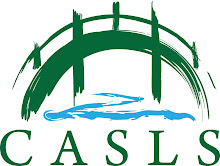Global Literacy through Mandarin Immersion and STEM Project
This project was developed through the Minnesota Mandarin Immersion Collaborative (MMIC), a partnership between four early total Mandarin immersion programs in Minnesota and multiple units at the University of Minnesota with funding from the U.S. Department of Education’s Foreign Language Assistance Program. Led by Immersion Projects coordinator, Tara Fortune, and project director, Molly Wieland, the curriculum team repurposed existing Engineering is Elementary® (EiE®) curriculum for the Gr. 3 unit entitled "Just Passing Through: Designing Model Membranes" and created an expanded interdisciplinary unit of study for the Mandarin immersion classroom. The unit introduces a new framework for integrating, differentiating, and assessing immersion language development. EiE® materials were used with permission from the Museum of Science in Boston.
For more information about the project and to access the curriculum materials see: http://www.carla.umn.edu/immersion/mmic
Drawing from the MMIC project experience, Tara Fortune wrote an article entitled "Language or Languages at the Core?" that appeared in the National Capital Language Resource Center newsletter in December 2012. See the introduction to the article and a link to the full PDF below:
Language or Languages at the Core?
Tara Williams Fortune, Ph.D.
CARLA and The University of Minnesota
Introduction
A striking feature of the Common Core Standards for English Language Arts & Literacy in History/Social Studies, Science and Technical Subjects (2010) is the pivotal role that literacy plays in schooling and the interrelatedness of language, literacy and subject matter learning. College and Career Ready Standards, a precursor to Common Core Standards (CCS), also establish cross-disciplinary literacy expectations that presume shared responsibility among various disciplines for the development of English language and literacy.
In a similar interdisciplinary vein, U.S. educators and policy makers of science and technical subjects have argued for an integrated and improved approach to the study of science, technology, engineering and math (STEM) subjects (National Academy of Sciences, 2009). The focus again is one of leaving behind the “siloed” approach to teaching and learning and instead embracing opportunities for interconnections. Also, both CCS and STEM initiatives underscore the need for the U.S. to develop a globally competitive workforce, one that possesses the subject knowledge and communication skills to address 21st century issues.
What is missing from these two documents, however, is an explicit mention of world languages and cultures education as an essential component of a well-designed, standards-based curriculum that aims to prepare a globally competitive workforce. It would seem that learning languages other than English is still viewed by some as a dispensable add-on, a useful supplement once you have accomplished the basics.
How can world language educators promote a shift in focus away from “(English) Language at the Core” to “Languages at the Core?”
Download full article from http://nclrc.org/about_teaching/topics/Feature-Fortune-full.pdf
Fortune, T. [LIM-A] Immersion Curriculum Unit Online! LIM-A listserv (LIM-A@LISTS.UMN.EDU, 10 Jan 2013).
January 11, 2013
Subscribe to:
Post Comments (Atom)





No comments:
Post a Comment
Note: Only a member of this blog may post a comment.